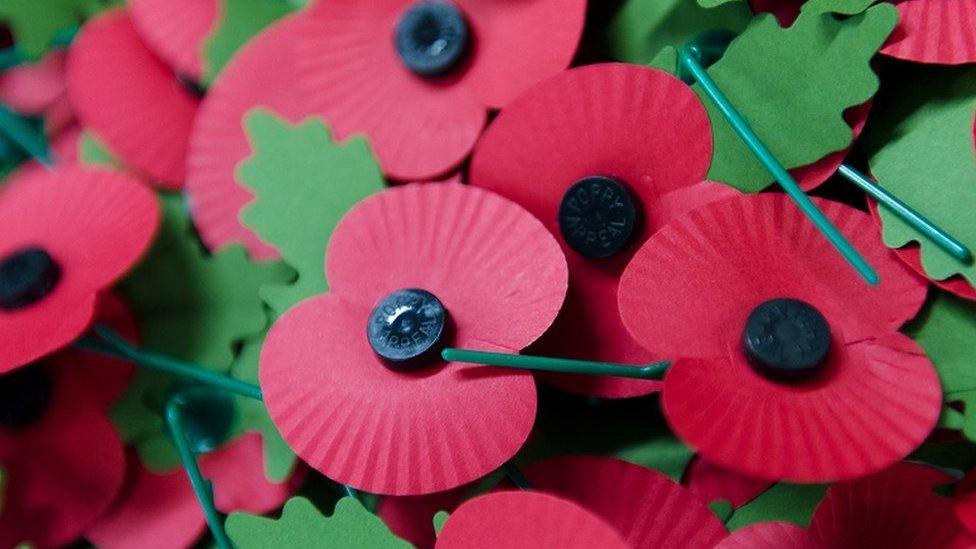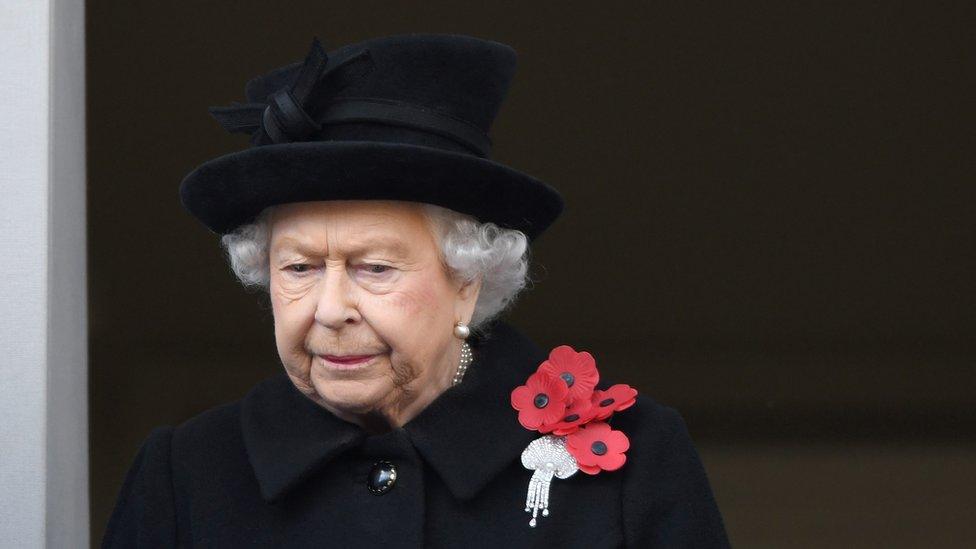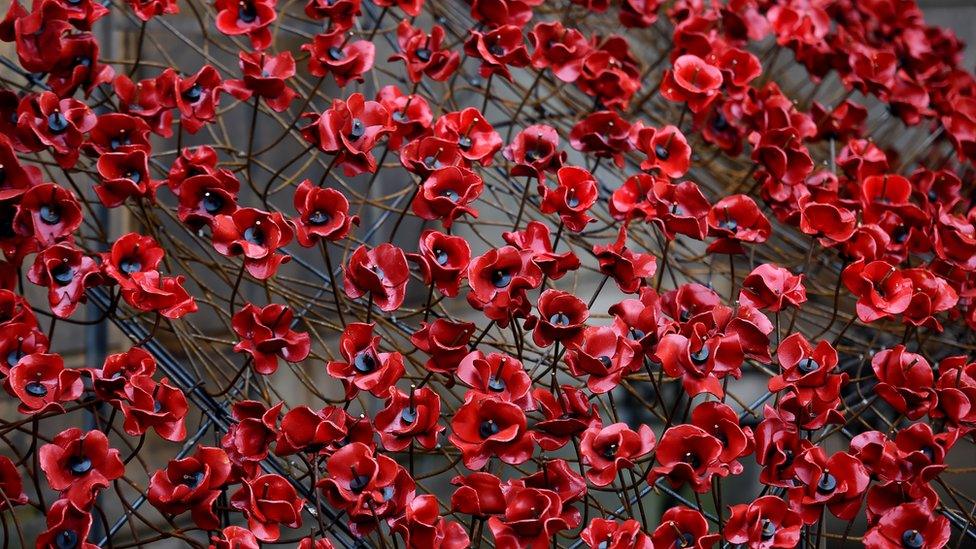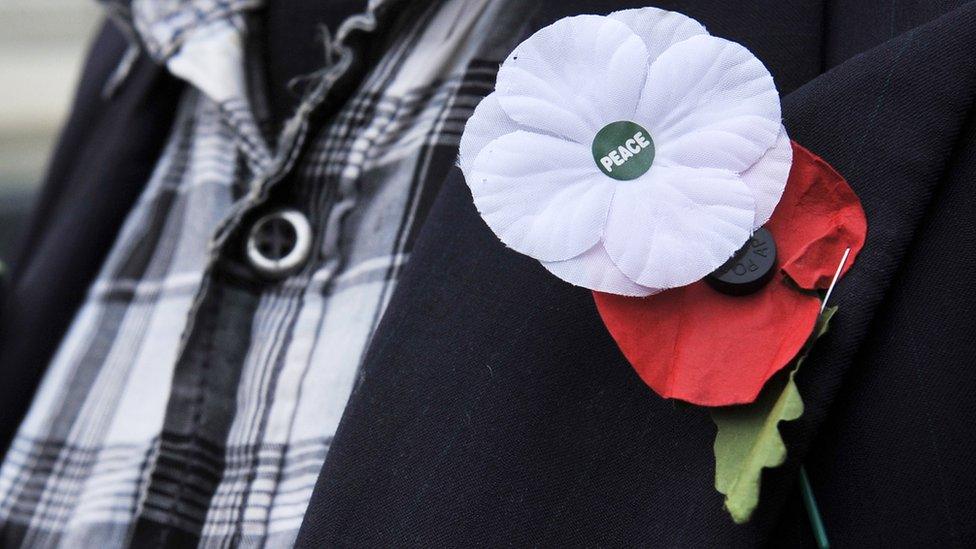Red poppy to mark civilian victims of war and 'acts of terrorism'
- Published

The red poppy will this year pay tribute to civilian victims of war and "acts of terrorism", along with the UK's armed forces.
The Royal British Legion said it had updated its definition of the remembrance symbol to be "more explicit" about its meaning.
Red poppies are traditionally worn to remember those who fought in war.
It means the symbol will now encompass victims of incidents such the Manchester Arena attack in 2017.
The move, first reported by the Guardian, external, comes ahead of the launch of the charity's latest poppy appeal on 24 October.
The Royal British Legion's assistant director, Robert Lee, said that the organisation has "always acknowledged the human cost of conflict" since it was founded in 1912.
He added: "Our core positioning hasn't changed but we do want to make it more explicit in our language, because Remembrance is inclusive of all modern Britain."
Previously, external the charity's website said that the poppy related "to the armed forces community specifically, but not exclusively" as a symbol of remembrance and "hope for a peaceful future".
The website now says, external that the symbol:
Remembers the sacrifice of the armed forces from Britain and the Commonwealth
Pays tribute to the special contribution of families and the emergency services
Acknowledges innocent civilians who have lost their lives in conflict and "acts of terrorism"
The Peace Pledge Union, which produces white poppies to remember all victims of war, welcomed the decision as "a good step in the right direction".
But it urged the Royal British Legion "to go further and promote remembrance for people of all nationalities affected by war", noting that the change "only uses the word acknowledge in reference to civilians".
Mr Lee added: "As a charity we have a particular responsibility to the armed forces community under our charitable remit and the deaths of personnel who have served with the British armed forces will always be at the heart of Remembrance for the Legion.
"But Remembrance has a wider meaning and role, and this does include all civilians affected by conflict and terrorism."
The Royal British Legion, which distributes 40 million poppies each year, raised more than £50m for veterans of the British armed forces and their families in 2018.

Why do people wear poppies?

Red poppies are traditionally worn at the annual Remembrance Sunday memorial in November
Red poppies began being used as a symbol in 1921 to help to remember those who fought in war.
The flower was chosen because it grows wild in many fields in northern France and Belgium - where some of the deadliest battles of World War One took place.
Its use was inspired by a poem, written by serving soldier John McCrae, which begins, "In Flanders' fields the poppies blow / Between the crosses, row on row..."
The Royal British Legion stresses that is is a symbol for remembrance and hope and should not be seen as a symbol of religion or politics.
White poppies have also been distributed by the Peace Pledge Union, the UK's oldest secular and pacifist group, since 1933.
Like the red poppy, the white badge also symbolises remembrance for victims of war.
Many people began wearing white poppies to stress the "never again" message, which emerged after World War One, and which pacifists feared was slipping away.
The Peace Pledge Union says the white poppy also represents a lasting commitment to peace and the belief that war should not be celebrated or glamourised.

- Published10 November 2017

- Published25 October 2018
